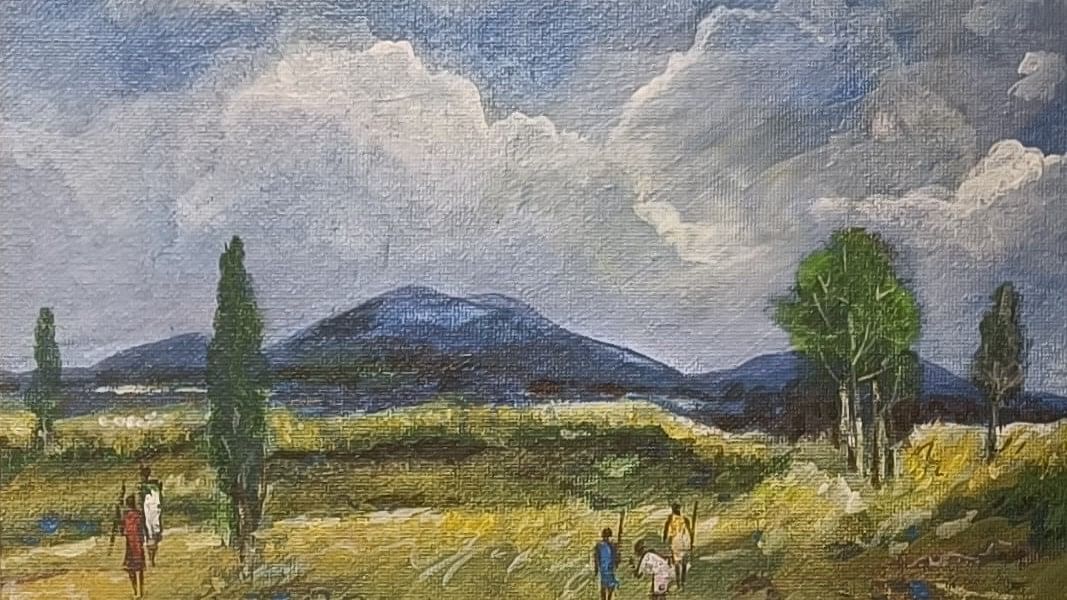
A work by Das.
Pic by author
Artist Satyabrata Das recently presented ‘A Visual Vocabulary’, a solo show of paintings, in Bengaluru. Reminiscent of Vincent Van Gogh’s post-impressionist painting style, the small-format landscapes were inspired by the famous artist, and attempted to capture the colours of the sky and the natural topography of various places that Das has visited. His paintings are essentially a celebration of the magnificence of nature, its vastness and grandeur; they subtly capture the essence of that particular locale.
Das was born in Odisha, where architectural heritage is abundant in the form of temples and monuments. The transformation of the skyline always struck him, and he was fascinated by how heritage structures appear in the changing light — from the rising sun to the darkness of a night bathed in moonlight. The play of light and shadow in the crevices and details of the architectural features inspire him, and he depicts these minute and sometimes spectacular shifts in the landscape in his works.
He studied Fine Arts at Santiniketan, Visva-Bharati University, and was fortunate to have been under the tutelage of eminent artists such as K G Subramaniam, Somnath Hore, and Ajit Chakraborty, all of whom contributed immensely to his understanding of diverse artistic forms and techniques.
In his early student days at Santiniketan, Satyabrata Das also had the rare privilege of being mentored by the eminent artist and sculptor Ram Kinkar Baij.
According to him, “This mentorship played a pivotal role in shaping my artistic vision and instilling in me the importance of creativity and passion in the world of art.”
After a stint in the corporate world, where he still found time to pursue art, and organise several art camps and events, he found himself mentoring young artists, and it soon reignited his passion for painting.
Das not only likes to quote Van Gogh, “If you truly love Nature, you will find beauty everywhere,” but also lives by this idiom. During his extensive travelling, he translates the natural beauty of the land onto his canvas.
His imagery is an emotional and sensory response to the landscape rather than an accurate depiction of it. The bold brush strokes and oftentimes use of a palette knife, combine to add vitality and a sense of movement. Windswept fields, rolling hills, and tall tree trunks covered with ice and glowing in the moonlight form an array of compositions that encapsulate the various seasons and colours of nature.
While some works have been done en plein air capturing the mood of the setting sun or the glint of the moonlight, others are based on photo references. He uses both acrylic and oils on canvas, to enhance the textures while preferring monochrome in several of his works.